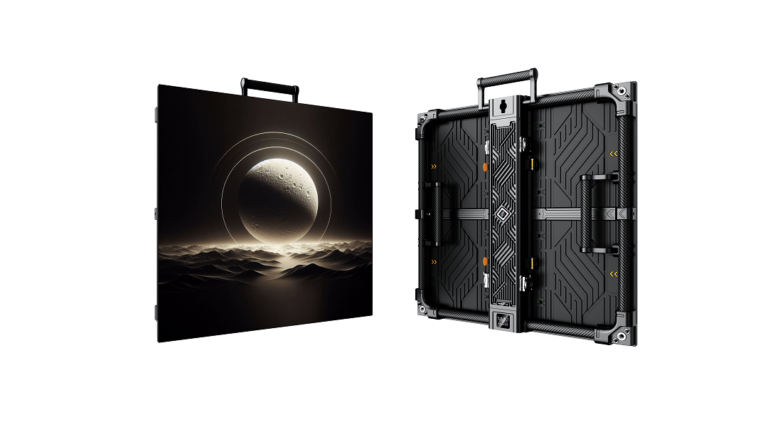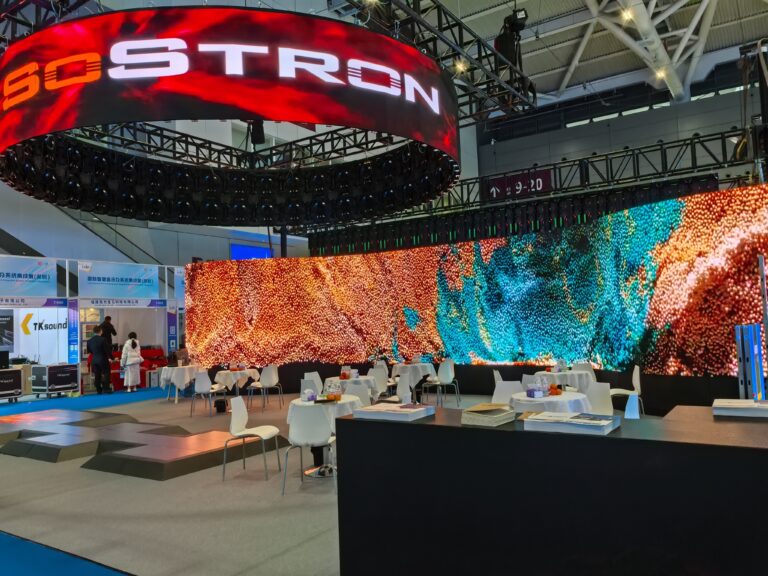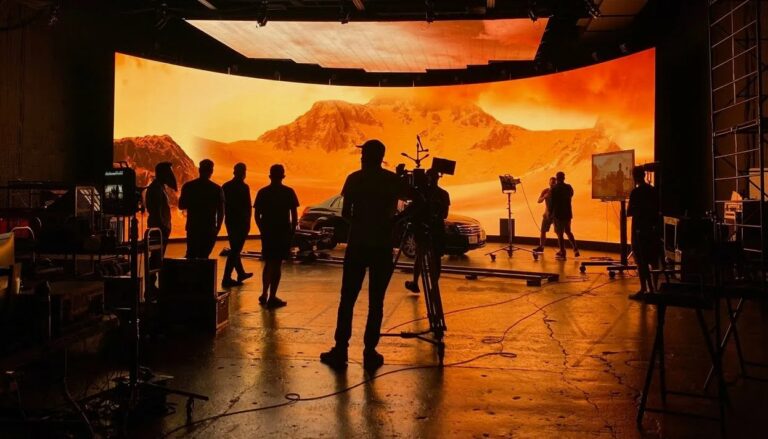Directory
What is a 3D LED display
How 3D LED displays work
The use of 3D LED display points
Application scenario of 3D LED display
How to choose the best 3D LED display for your needs
The price of 3D LED display this year
What is a 3D LED display
3D LED display is a new type of display equipment which combines 3D technology and LED display technology. It can present realistic three-dimensional images and more vivid color performance, so that the audience is more immersed and enjoy when watching.
The 3D LED display uses a series of complex technologies, such as stereo imaging, 3D glasses, raster, etc., to create a realistic three-dimensional effect by dividing the image into two different parts through special algorithms and simultaneously projecting different images onto both eyes of the viewer.
With higher resolution and wider viewing angles than traditional flat displays, 3D LED displays allow viewers to view images from different angles and positions while still achieving excellent visual effects. At the same time, 3D LED display also has higher color performance and lower power consumption, which makes it widely used in a variety of application scenarios, including movie theaters, games, virtual reality and outdoor advertising.
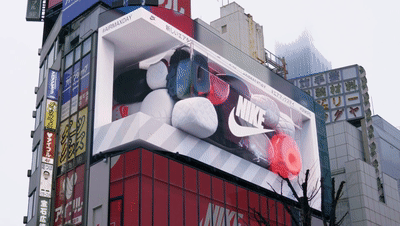
How 3D LED displays work
The 3D LED display works by combining 3D technology and LED display technology, using a special algorithm to divide the image into two different parts, while simultaneously projecting different images onto both eyes of the viewer, resulting in a realistic three-dimensional effect.
Specifically, the 3D LED display uses stereoscopic imaging technology, which divides the image into two distinct parts, and simultaneously transmits the left and right images to the viewer’s right and left eyes through special devices such as a grating or lens. When the viewer’s eyes see two different images, the brain combines the two images into one three-dimensional image, creating a realistic stereoscopic effect.
In addition, 3D LED displays need to be paired with 3D glasses that filter out the corresponding left and right images so that each eye sees only its corresponding image, allowing the viewer to see the 3D effect.
Overall, 3D LED displays work in a very complex way, requiring the use of a series of special technologies and devices, such as stereo imaging, grating, lenses and 3D glasses, to produce realistic 3D effects.
The use of 3D LED display points
Viewing distance: When viewing 3D LED displays, keep a certain distance from the display. It is usually recommended that the distance be twice the diagonal length of the display. If it’s too close or too far away, it may affect viewing.
Viewing Angle: Maintain a proper viewing Angle when viewing 3D LED displays. It is usually recommended that the vertical Angle be no more than 15 degrees and the horizontal Angle be no more than 45 degrees. If the Angle is too large, it may affect the viewing effect.
Display effect: The display effect of 3D LED display may be affected by the ambient light, so it is recommended to watch in a darker environment for the best viewing effect. In addition, different 3D content may have different display effects, so it needs to be adjusted according to the actual situation.
Maintenance: 3D LED display requires regular maintenance and maintenance in order to maintain good display effect and service life. It is usually necessary to clean the surface of the monitor regularly to avoid accumulation of dust and stains affecting the viewing effect. At the same time, it is necessary to avoid prolonged use or overuse to extend the life of the display.
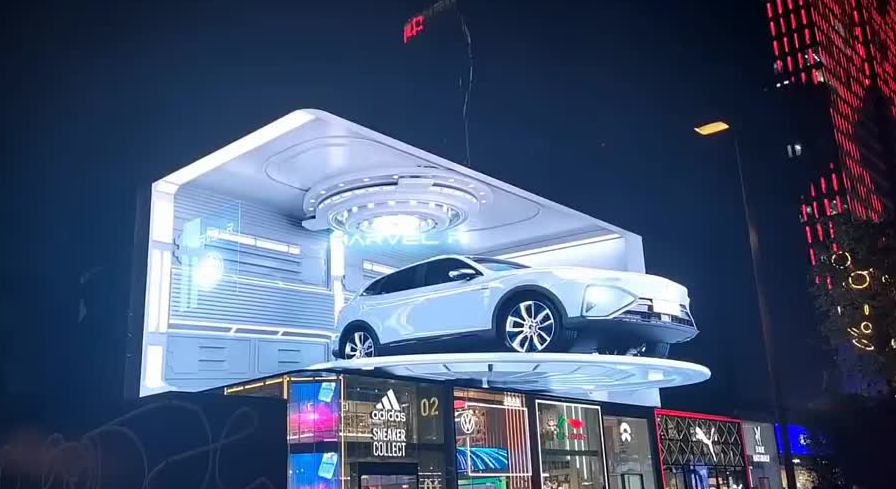
Application scenario of 3D LED display
3D LED displays are becoming a common display device in many situations. Here are five common application scenarios.
Advertising display: 3D LED display can produce realistic 3D advertisements, attract the attention of the audience, so as to improve the advertising effect. In business, 3D LED displays are often used for brand display, product promotion and promotional activities.
Interior decor: 3D LED displays can add a sense of style and technology to interior decor. For example, 3D LED displays can be used as decorations on walls, ceilings or furniture to create unique visuals and atmospheres.
Activity performance: 3D LED display can be used for various performance occasions, such as concerts, concerts, drama and so on. In these situations, 3D LED displays can be used for background, visual effects and stage design.
Sports events: 3D LED displays can be used in venues for various sports events, such as football stadiums, basketball courts, velodrome, etc. In these cases, the 3D LED display can be used for real-time data display, game playback and advertising.
Cinema: 3D LED displays can be used in cinema projection equipment to provide a realistic 3D movie experience. In these situations, 3D LED displays can be used for projection screens in theaters, movie posters and advertising campaigns.
In general, 3D LED display has a wide range of application scenarios, suitable for display and publicity in various commercial, entertainment, cultural, sports and other occasions.

How to choose the best 3D LED display for your needs
Here are five things to consider when choosing a 3D LED display that best suits your needs.
Size and resolution: Size and resolution are important factors to consider when choosing a 3D LED display. Choose the appropriate size and resolution according to your scenario and requirements.
Display effect: The display effect of 3D LED display is another important factor in the selection. You can choose according to your desired display effect, such as color brightness, brightness, contrast and response time.
Viewing Angle and viewing distance: Viewing Angle and viewing distance are also factors to consider when choosing a 3D LED display. Choose a 3D LED display with a large viewing range and suitable viewing distance.
Price and brand: Price and brand are also factors to consider when choosing a 3D LED display. Choose a 3D LED display with a reasonable price and a guaranteed brand, and avoid products with low prices or unknown brands.
Functionality and ease of use: Functionality and ease of use are also factors to consider when choosing a 3D LED display. Choose a 3D LED display that has a good user interface, is easy to operate, and has the necessary features and additional devices (such as remote control, wireless connection, etc.).
To sum up, choosing the 3D LED display that best suits your needs requires a comprehensive consideration of such factors as size, resolution, display effect, viewing Angle, viewing distance, price, brand, functionality and ease of use.
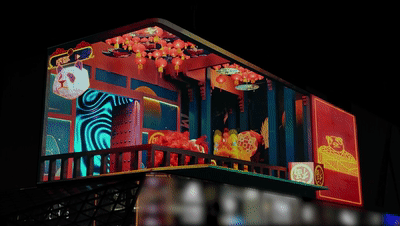
The price of 3D LED display this year
Prices of 3D LED displays vary by brand, model, size, pixel density, brightness, gray scale and other factors. Generally speaking, smaller 3D LED displays are less expensive, while larger 3D LED displays are more expensive. At the same time, the higher the pixel density, brightness, gray level and other performance indicators, the higher the price of 3D LED display.
Currently, the most common 3D LED screens on the market are 1-5 square meters in size, and their prices range from $10,000 to $50,000. Meanwhile, some high-end 3D LED displays can cost hundreds of thousands of dollars. These prices are only the price of the display itself, and do not include installation, commissioning, transportation and other costs, the actual use of the cost may be higher.
3D LED display prices with the continuous development of technology and the gradual maturation of the market and gradually reduced. With the reduction of production costs and the improvement of technology, the price of 3D LED display will gradually decrease, making this high-tech product available to more users. However, the current 3D LED display is still relatively expensive high-end products, need to be selected according to their own needs and budget. At the same time, when buying a 3D LED display, it is also necessary to consider its performance, quality, after-sales service and other factors to ensure the stability and reliability of the product.

